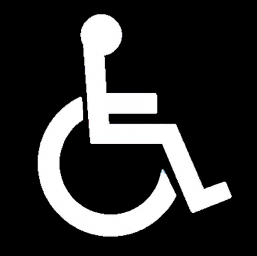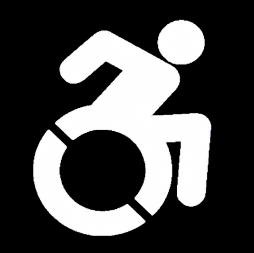International Accessibility Symbol Design Competition
The International Union of Architects and Rehabilitation International (RI) are jointly inviting submissions for a twenty-first century symbol of accessibility to represent their core values of rights and inclusion, independence, physical and virtual accessibility for all, including people with disabilities.
The challenge is therefore to develop a new symbol of accessibility that better represents the variety of people who use buildings and other types of built environments. The competition invites professional architects and graphic designers as well as architectural and graphic design students to design a new graphic symbol of accessibility, to be proposed to the International Organization for Standardization (ISO) for adoption as the new international symbol of accessibility.
INTRODUCTION
The UIA (International Union of Architects) and RI (Rehabilitation International) are jointly inviting submissions for a 21st Century symbol of accessibility to represent their core values of rights and inclusion, equity and independence, diversity, physical and virtual accessibility for all, including people with disabilities.
The International Symbol of Accessibility (ISA) did not exist 50 years ago. It was created in a design competition organised by RI-ICTA (International Commission on Accessibility and Technology) and won by Danish design student Susanne Koefoed in 1968. The ISA, which is also known as the “wheelchair logo”, is widely used by architects and others to identify buildings, facilities and other elements of the built environment that are accessible to people with disabilities.
The symbol is deemed the property of Rehabilitation International and its design and use are covered by the ISO Standard 7001.


Over the past few years, however, an alternate icon has rolled into sight. The “Accessible Icon,” a rival wheelchair symbol that confers motion on the figure. This symbol has recently mushroomed into a movement, even being codified in emoji. It has also created backlash: variously called ableist and empowering. It has been officially rejected by ISO and deemed federally illegal despite adoption by several states in the USA. Now the ISA has found its way into the middle of a growing debate over how people with disabilities should be represented.
The ISA has contributed to a widely held perception that accessibility and inclusion are solely about mobility impairments . . . and wheelchair-users.
“Many feel the symbol needs change. The wheelchair figure does not represent disabilities like impaired vision and hearing loss or the broader spectrum of people who may be excluded by design. Many feel the wheelchair itself… doesn’t accurately represent how persons with a disability function at work, at school or in the community”. Anonymous, BraunAbility
The challenge is therefore to develop a new symbol of accessibility that better represents the diversity of people who use buildings and other types of built environments.
Click here for more information
See the> brief
Submit a> design
Deadline for submissions is March 25, 2022 at 11:00 a.m.